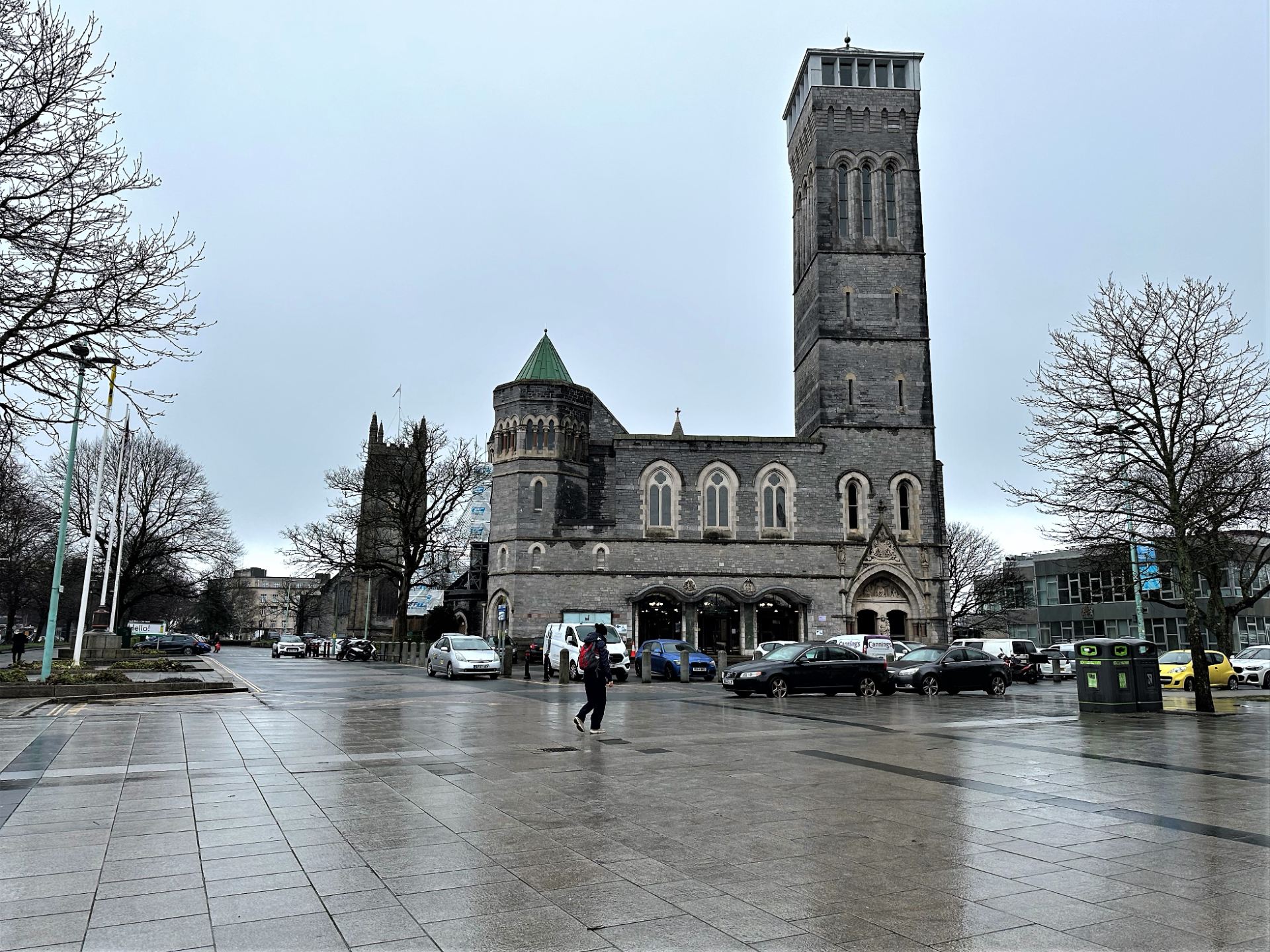
Proposals to refurbish Plymouth Guildhall could bring more music events to the city and increase the building’s use as a venue.
Plans have now been submitted to the city planning department for improvements in the Great Hall, which has been used in the past for gigs and other events, to give better lighting, audio visuals and sound. Trusses would be installed allowing AV, light and sound equipment to hang from the ceiling, with acoustic panels and curtains being positioned to improve the sound quality. This is to be combined with the existing ventilation grilles, and chandelier lighting.
Replacing the current fixed stage and its three extending sections within the Great Hall, which can accommodate up to 1000 people standing, will be a new modular stage offering more options such as a catwalk, a smaller stage, or a round theatrical space designed to attract a wider variety of users and events.
Back in the 1960s and ‘70s the Guildhall attracted classic bands to perform there which included Queen, the Who, David Bowie, Roxy Music, and Emerson, Lake and Palmer who made their stage debut on Sunday 23 August 1970. Tickets for that show were priced at only 10, 12, and 15 shillings.
Many of these concerts were organised by the Van Dike Club, originally based in Devonport from 1968 – 1972, who made use of the city centre venue to bring in popular music of the time.
It is hoped that the upgrade will encourage more live gig performances like these to make use of the new facilities.

In addition to the changes recommended for Great Hall, acoustics, lighting, and furniture will also be upgraded in the Drake, Astor, Charter, and North rooms to enable events to run simultaneously.
Access will also be made easier for disabled people to attend events with an entrance ramp being put in at the front of the Guildhall where the main doors will be refurbished, and the security gates removed.
All existing lifts will be overhauled, and accessible platform lifts will be put into the lobby stairs and first floor tea bar, improving ease of access for all users.
Other areas supporting people with disabilities will be in the lounge and bar areas where existing bars are to be replaced with longer versions giving more space for serving, and this will include lower counters, too.
Cabinet Member for Finance, Councillor Mark Shayer said: “We have this amazing building, but we need to make more of it. There have been lots of discussions with event organisers and promoters so that the improvements work for them as well as ensuring the building’s amazing interior is not compromised.
“We see this as an investment – not just in the city, but the city centre, a feel-good factor for residents of all ages who can enjoy a wider variety of events – and it will bring in an income for the council.”
The surviving Guildhall, believed to be the fifth in existence since the 15th Century, was completed in 1874, and reduced to a shell during the Blitz on the night of 21 March 1941. Following this bombardment, the municipal offices section of the Guildhall had to be demolished but the rest was re-roofed and restored to open again in 1959.
According to Historic England it was only saved from demolition by a single council vote in 1951.
They described it as a ‘rare and unusually rich example of an unaltered Festival of Britain interior and there are some glorious touches including an impressive black and white marble staircase in the centre. There’s a mural depicting famous sons of Plymouth and the city’s maritime history, with three stunning 1950s chandeliers.’
All three chandeliers are brightly lit and represent the old ‘Three Towns of Plymouth’ (Plymouth, Stonehouse and Devonport), each measuring 2.44 metres in diameter.
Plymouth City Council have stated that the new design has been carefully put together to make sure any upgrades will minimise the impact on this Grade II listed building where possible. It is also intended to create space for a variety of uses, such as other entertainment events, conferences, training, weddings, and hot-desking.
The proposed project is expected to cost £3.9m comprising £2.45m which was allocated in the Council’s capital budget in March 2021 and £1.5m from the Future High Streets fund.
